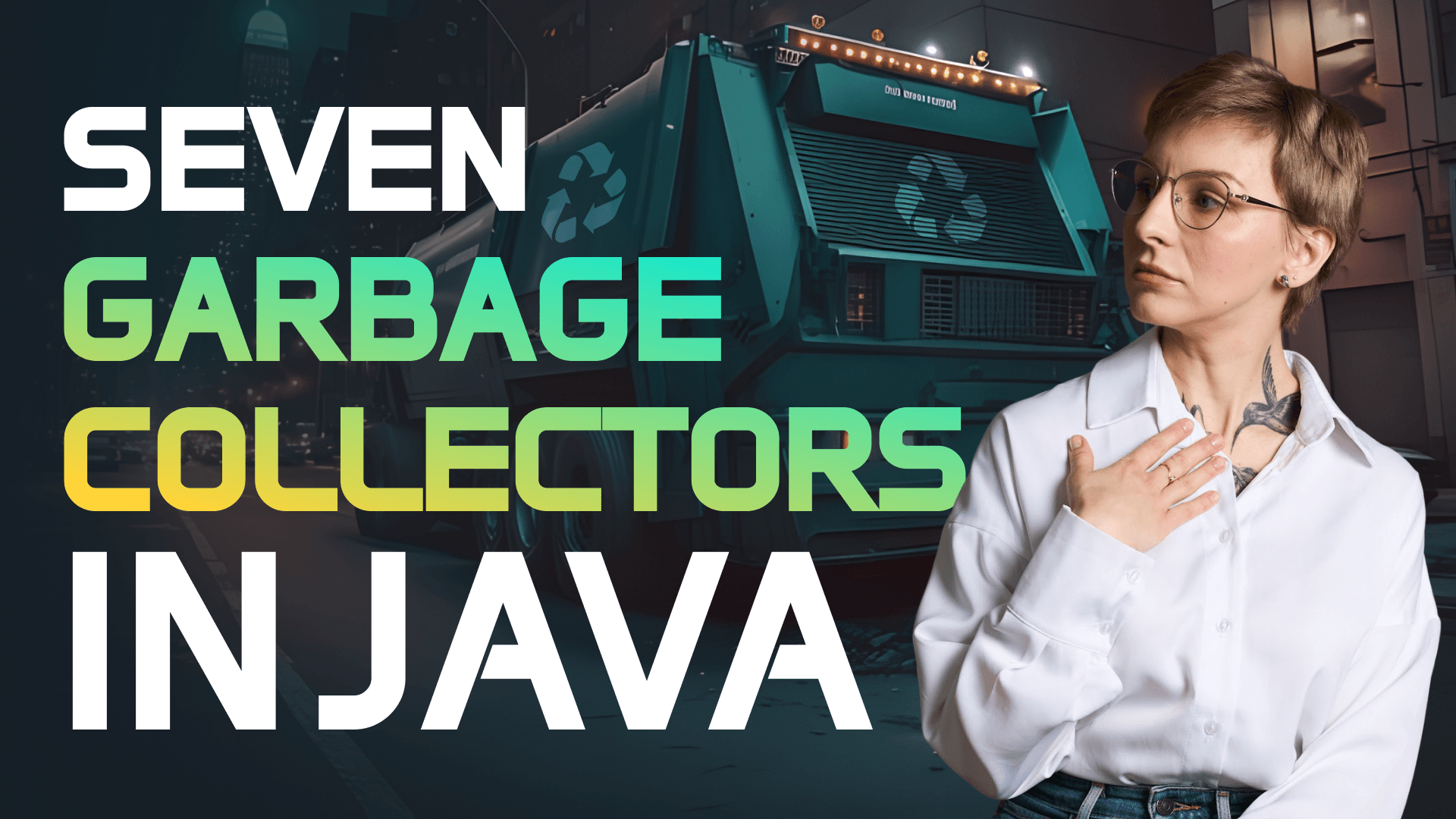Java in 2025: Busting the Biggest Myths
Transcript:
Welcome to Java Mythbusters, where we are tearing down the most ridiculous myth about Java. Is Java really slow? Is it dead? Is it too verbose or only for enterprise apps? Well, today we are going to bust this myths. Why do you open with facts, real examples, and a little bit of fun? I'm Pasha and while I love good cotlin project, I'm here to show you why Java is still a powerhouse in 2025 and why this myths you heard about are just that myths. So sit back, relax, and let's have some fun. Let's get started.
Let's tackle the first myth. Java is slow. You know what? I remember when this actually was true about 15 years ago Java was slow. I'm not joking. The early JVMs had real performance issues. Large collection would freeze your app. Startup times were painful and everything just felt sluggish. But then came the revolution and its name was Hotspot. The thing changed the game. Hotspot doesn't just run your code, it watches it. It sees what parts of your app run the most and optimizes them at runtime. So the longer your app runs, the faster it gets. Still skeptical? Let's talk real world performance. While C++ is still faster in real benchmarks, Java delivers amazing consistency and scales like crazy in real systems. The Renaissance benchmark su designed for modern workloads shows that Java performs incredibly well for things like reactive streams, concurrent data structures, and message passing. Plus, Java gives you control. You want latency, choose a different garbage collector, need more throughput, tune the thread pools, and heap. With the right settings, Java apps can handle millions of requests per second reliably and with predictable performance. And that's why banks, airlines, and cloud platforms trust Java. It's not just fast, it's battle test, it's unable, and built for scale. So the next time someone says Java is slow, you can just smile and say, "Yeah, if you live in 2005, myth busted."
All right, let's talk about the next one. Java is dead. Seriously, I've been hearing that for about 10 years now. It's like the zombie myth of programming languages. You know what? Java is not that. In fact, let's look at some hard facts. According to to index which tracks per programming language popularity, gel has consistently been in the top three for the past decade and it hasn't dropped out of the top five in 20 years. But wait, there is more. Check out GitHub and Stack Overflow surveys. Java is still one of the most popular languages in the world for both open source and enterprise projects. And if you think Java is only for legacy systems, think again. New projects are still being built in Java. Companies like Netflix, LinkedIn, and Airbnb. They're still using Java for major parts of their architectures. Plus, we seeing more startups embracing Java 2. The latest state of Java 2025 report shows a growing trend of new apps built on Java frameworks like Spring Boot. And don't forget, Java's ecosystem is very much alive. Java libraries are getting frequent updates. The language itself keeps evolving with feature-like records, but matching and virtual threads. Thanks, Project Loom.
The JVM is still one of the most optimized virtual machines out there. Plus, Trevor runs on all platforms from cloudnative services to Android apps. Now, let's talk about Cabal for a second. You know what? People say Cabal is dead, too. Yet, it's still powering banking systems, government services, and financial applications worldwide. So, Cabal can stick around for 60 plus years. What makes you think Java, a modern evolving language, is going anywhere? Java's been around for 25 years, and it's just as relevant today as it was when it first launched. It's evolving, scaling, and powering new tech and not just legacy code. So, no, Jav is definitely not dead. It's been evolving, it's been scaling, and it's still the backbone of some of the biggest and most innovative systems on the planet. So next time someone says Java is dead, you can tell them nice try buddy, but Java is alive, kicking, and better than ever. Myth busted. Okay, let's take on the myth Java is heavy.
Seriously, this one is outdated. Let's set the record straight. Yes, Java used to have a reputation for being a bit bulky, but JVM, large JDK, slow start up, sure, in the past. But if you're still thinking of Java like that, you're missing out on some of the coolest innovations in the language's history. For starters, GRE, you don't always need the entire JDK to run Java in production. That's right. You can use the GRE, which is the runtime environment, and it's way more lightweight than the full JDK. Communist like Belloft who have been producing JRE flavors that are specifically optimized for production workloads. These jaries are leaner, fast, and perfect for server side on cloud applications. But that's just the start. Have you heard about JLink? It's a tool that allows you to cut down the JDK to only the modules you need. It's like creating your own custom Java runtime environment. No blood, just what you need to run your app. Super sleek and efficient. And if we are talking about memory footprint, well, Grow VM Native Image and Liberative Image Kit are here to save the day. With Coral VM, you can compile Java into a native executable. That means no JVM ever had just fast small native apps. And with Liberic Native image kit, you can do the same. Optimizing your Java apps to be ultra lightweight and quick. So heavy not anymore. Java evolved to be light, fast, and efficient. From GRE to JLink and with Grav VM, Java is perfect for modern world of microservices, containers, and cloud environments. Next time someone says Jav is heavy, just smile and say, "Not anymore, my friend. Not anymore." Myth busted.
Myth number four. Let's keep this one short and sweet. You've probably heard someone say, "Java is expensive." Well, kind of, but not really. Here are the good news. Java itself is free and open source. You can use Open JDK in any environment, dev, test, production, completely free. Now, if you want commercial support, sure that costs money. But here's the thing, you're not stuck with just one vendor. There are multiple options, Oracle, Beloft, Amazon Careta, and others. And they all offer different support plans at different prices. So, if you need support, you can totally find a deal that works for your business. Shop around. But if you just want to build cool stuff, Javi is 100% free. Products are free. Services are paid. Myth busted.
All right, let's get this straight. Java is only for enterprise. What does that even mean? That if you're not building banking software or a CRM system, you shouldn't touch Java. Nonsense. Java is for everyone from massive corporations to ind. Sure, it thrives in enterprise, but it's also used in startups, side projects, hobby tools, even open source experiments. You've heard about Minecraft, right? Yeah, that blocky little game that kind of took over the planet. Java. Okay, that's enough about Minecraft. Moving on. Frameworks like Spring Boot make it super easy to spin up a modern web app in minutes. Java's tooling is a dream. IT support is topnotch in DJ is definitely your peak. You've got build tools like Maven and Gradle testing frameworks like JUnit and test containers and a massive ecosystem of libraries on Maven Central. Basically, if you can imagine it, someone's already written a Java library for it. Whether you are building a personal tool, a startup MVP, or a production grade platform, Java's got your back. So, next time someone says Java is just following price, you can laugh and say only if you are thinking small. Myth busted.
Okay, frankly, this one comes way too often. Java is not secure. Really, let me break this down for you because it's just not true. First off, Java was designed with security in mind. From day one, it had features like sandboxing, by code verification, and no direct memory access. You don't get buffer overflows in Java. You don't have to worry about manual memory management. The JVM does that for you and does it safely. It also means no random pointer arithmetics, no oops, I wrote past the end of the array because Java has automatic bounce checking and get it gets even better. Java strongly type language with built-in null safety tools allow optional but matching and records. All of this reduces the surface area for bugs and vulnerabilities. Now sure people bring up examples like log for shell fair. That's that one was serious. But here's the important part. It was patched almost immediately. The ecosystem responded fast and most vendors had updates ready within hours. That's one of Java's superpowers. It's backed by massive communes in multiple vendors like Oracle, Belloft, Azul, Amazon. So when something goes wrong, it gets fixed quickly. And let's not forget the tools. You've got static analyzers like sport box, security scanners like OWSP, dependency check, and even ide like intelligj that warn about your risky code in real time. Compared to low-level languages like C and C++, Java's memory safety alone makes it a huge win for secure development. So, is Java magically invincible? Of course not. No languages. But Java is not secure. That's just lazy thinking. Java has the features, the tooling, the updates and the community to help you build secure application if you use it right. Myth busted.
This was your version of Java mythbusters. Do you know more misconceptions about Java? Write them in comments and who knows, maybe we'll talk about them too. See you soon. Pasha out.





